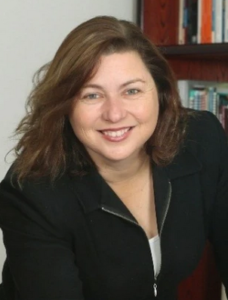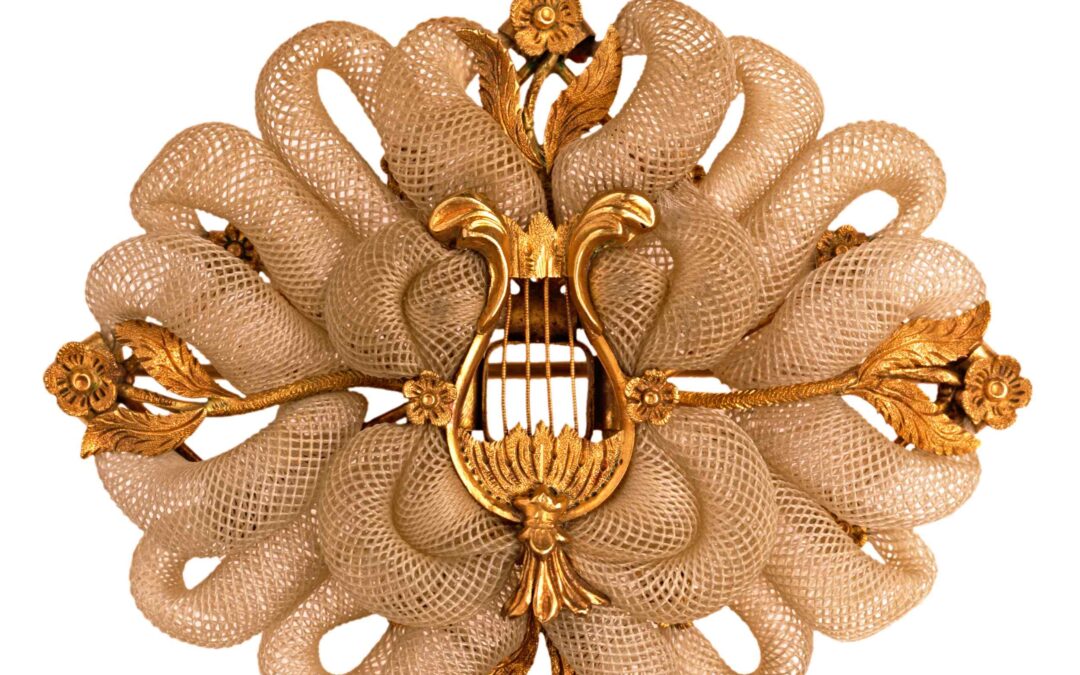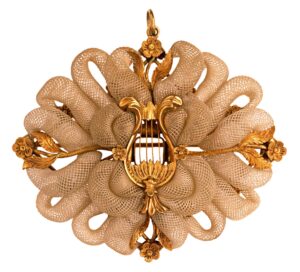by Michelle Scott Tucker
 There are a surprising number of examples of independent women from the early days of white settlement. Next month we will look at Elizabeth Macarthur, the subject of Michelle’s 2018 biography. Here, Michelle reviews the diary of Anne Drysdale and her ‘extraordinary’ partnership with Caroline Newcombe as farmers near Geelong in the 1840s.’.
There are a surprising number of examples of independent women from the early days of white settlement. Next month we will look at Elizabeth Macarthur, the subject of Michelle’s 2018 biography. Here, Michelle reviews the diary of Anne Drysdale and her ‘extraordinary’ partnership with Caroline Newcombe as farmers near Geelong in the 1840s.’.
Are diaries literature?
Having briefly gone down that particular Google rabbit hole, I can safely say – I don’t know. Plenty of others purport to know, however, if you need to fill a vacant hour or three.
I think diaries are to a finished text the way preliminary sketches are to a finished oil painting. Beautiful, sure, and interesting, definitely, but a not necessarily a work of art in their own right.
But all that probably doesn’t matter.
The diaries that get published are polished, are shaped and – in a sense – created to become a satisfactory narrative. Unlike the diaries you might find in an archive, or in a bedside drawer, published diaries often include biographical context, explanations, footnotes. They’ve been published precisely because they are interesting, rather than your Uncle Bob’s pocket diary with its endless lists of meals eaten and trains spotted. Such information might be useful for the specialist researcher, but is less interesting for the general reader.
It’s also crucial to point out that published diaries have, almost always, been edited. Which means some entries have been left out. But which? And why? What decisions have made been that the reader doesn’t necessarily know about?
Similarly, reading cursive writing can be tricky (depending on idiosyncrasies the writer, of course). So, for researchers, having a published “transcript” is often a blessed relief. Yet even where entries are included in the published document, it’s possible that words and even whole sentences have been mis-transcribed. In the past I’ve certainly found this to be the case with published letters.
The wise researcher, therefore, always attempts to return to the source, to the original documents.
Many published diaries also include a contextual narrative provided by the editor. I often find these historical and biographical insights incredibly helpful and interesting. They place the diarist in her own time and space, and fill us in on the bigger picture. As readers, we receive the advantage of the editor/researcher’s insights and expertise as well as being granted easy access to the primary source. Having that context also makes reading the actual diary entries much easier.
Melbourne-based Bev Roberts, a self-described writer, poet, historian, gardener, cook and proud virago, did something similar, and similarly helpful, in Miss D and Miss N: an extraordinary partnership, the diary of Anne Drysdale (published in 2009).
Anne Drysdale (1792-1853), a Scottish farmer, emigrated to Australia in 1840. Within months of her arrival, she met Caroline Newcombe, another émigré who was 20 years Drysdale’s junior. The two women formed a passionate friendship and began a shared life as pastoralists and farmers near Geelong, in Victoria.
Drysdale’s diaries begin in 1839, as she boards the ship that will take her to the other side of the world, and follow through to her death, at which point a grieving Newcombe took up the pen for another year or so.
The entries provide useful, fascinating and often detailed insights into the women’s daily farming life. Editor Bev Roberts offers a solid introduction, and then at the beginning of each chapter provides more useful context.
The following entry, which I’ve chosen more or less at random, is typical:
Fine. Armstrong lounged horses, etc. Robert threshed, Hyland jobbed about, put the bees into another scape. Caroline, Miss Clow, Mr Jeffreys & I breakfasted early & went to call upon Mrs Latrobe and Miss Fenwick. Caroline & I in the new chaise, the others on horseback. We returned at sunset. Mr & Miss Roadknight called.
Thursday 7th March 1844
It’s not fine literature, it’s a farmer’s diary and at that level it provides fascinating insights for historians and general readers alike.
I imagine that writers of historical fiction also draw on diaries like these, to capture the telling details that lend authenticity to a work.
The diary also serves as an important reminder – if such is necessary – of the ongoing British project of invasion and colonisation. Melbourne was formally established in 1835, and the colony of Port Phillip was still in its infancy when Drysdale arrived.
Drysdale describes mounted police setting out to “find some of the blacks who committed [a] murder” of a white shepherd and goes on to note that the “government certainly ought to do something for the protection of the white population.” The protection of the Black population does not seem to occur to her.
A few months later, this entry sums up Drysdale’s paternalistic approach.
Yesterday a tribe of natives, all men, came marching past the house about 60 in number, they walked in regular order each carrying his spear & a cockatoo’s feather in his head. The women & children followed & made their miam miams close to the house. They are quite tame & seldom do any mischief here.
December 9th, 1840
Those cockatoo feathers – what a telling detail. I can see them in my mind’s eye. It is sadly true, however, that sometimes the only records available to First Nations communities about their forebears are diaries like these, magnifying their documentary importance and value.
The relationship between Drysdale and Newcomb is, in a low key way, occasionally celebrated by the queer community. But the diary provides few insights into the women’s emotional lives and anyone looking for details of a sexual relationship between the pair won’t find it. They loved each other, though, that’s clear.
In her will, Drysdale left everything to Newcomb, much to the horror of her brothers back in Scotland, and Newcomb continued running their property ‘Coriyule’ after Drysdale’s death. In 1861 Newcomb married the local reverend, a man twelve years her junior. I know, right? People are endlessly fascinating. Perhaps tellingly, when Newcomb died in 1874 she was buried beside Drysdale at Coriyule.
For further information about Anne Drysdale and Caroline Newcomb:
- The four volumes that comprise Drysdale’s diary (a fifth volume, the second to last, is missing) are held at the State Library of Victoria. Click through to see Drysdale’s beautiful cursive script
- Historical Ragbag – a long, useful and highly recommended blog post about Anne Drysdale and Caroline Newcomb, including lots of relevant photos and images.
- The Australian Dictionary of Biography, Anne Drysdale
- The township of Drysdale, then near Geelong and now a suburb, was named in honour of Anne Drysdale. The Geelong suburb of Newcomb, originally known as West Maloop, had its name was changed at the request of the West Maloop Progress Association in 1956.
- The mourning brooch pic is from State Library of Victoria
- Coriyule homestead restored (including photos)
Michelle Scott Tucker is the author of Elizabeth Macarthur: A Life at the Edge of the World (Text, 2018); the co-writer of Torres Strait Islander Aaron Fa’Aoso’s memoir, So Far, So Good (Pantera, 2022); and is currently working on a biography of Louisa Lawson.







Loved this Michelle, including your introduction about diaries. Your comment about “Uncle Bob’s pocket diary with its endless lists of meals eaten and trains spotted” made me laugh. Mr Gums’ dad’s diary is renowned for recording the temperature of each day. Sometimes there’s not much else. I have my paternal great grandfather’s diary. He was a country-based minister at the time, and records when and where he gave sermons, and who he visited, but I haven’t spent a lot of time with it yet. It’s one of those small pocket diaries, with tiny handwriting.
However, the main point I want to say is that it took me a while to really enjoy Jane Austen’s diaries, because as you say they aren’t fine literature – even hers, a writer – but they tell you so much if you invest the time and not worry too much about truing to remember WHO everyone is.
Anyhow, I enjoyed hearing about Anne and Caroline. Thanks again, for contributing to the blog.
Thanks Sue, it’s an honour to be part of AWW, truly.
To your point about diaries being hard to read – I think that’s why we enjoy biographies and history books – because the good ones take the primary sources (which can be daunting/boring/difficult) and present them to us in an interesting way, with context and interpretation. They do the work for us, if you see what I mean. Museum displays are the same: here’s a tiny fragment of bone/here’s what it tells us about our prehistoric past.
I’m glad you feel that way, Michelle. And I certainly do see what you mean.
Oh my, Drysdale’s script IS lovely indeed. And I do enjoy reading published diaries (with a twinge of guilt, on occasion when, as with Louisa May Alcott, for example, it’s known that the author did not want them published). As with the American writer Langston Hughes,sometimes the diaries are so stuffed full of details about other writers and other kinds of artists, also in Harlem often, they can be an excellent way to become acquainted with an unfamiliar scene and era. And I’ve just finished reading a novel by Canadian writer David Bergen, who relied on two diaries for research, to tell a story that might have been similar to his ancestors’ story, one of them also a farmer’s diary, with ordinary details about everyday life. As you say, “endlessly fascinating”.